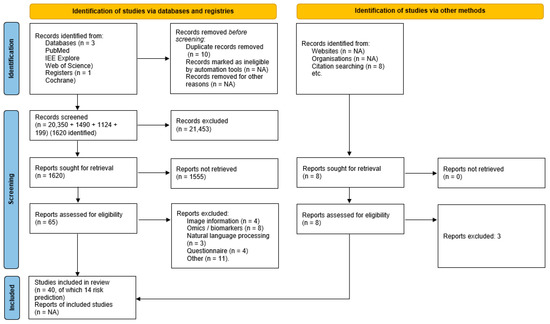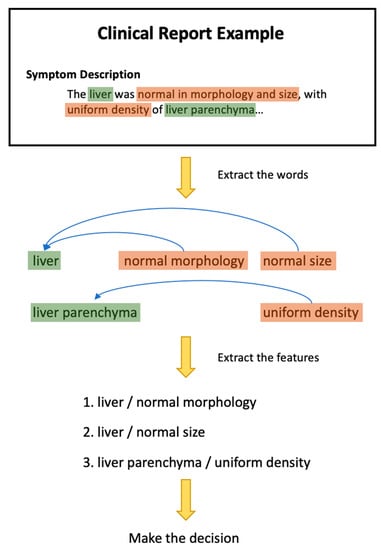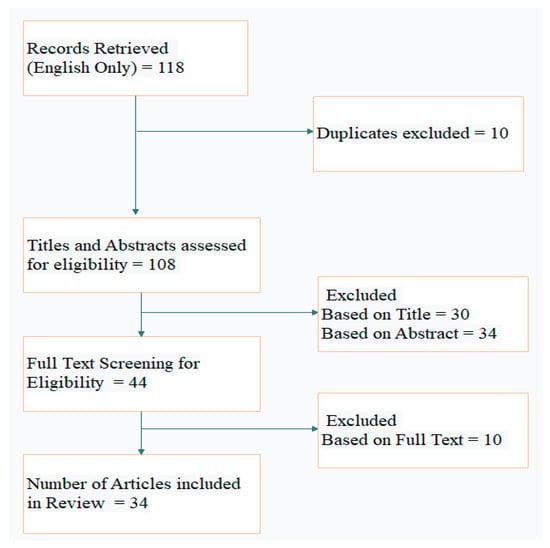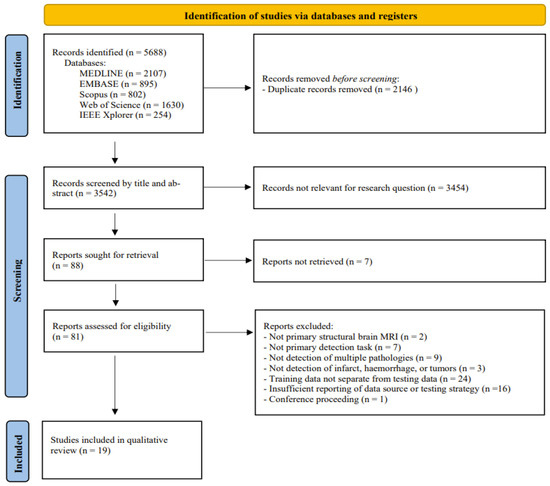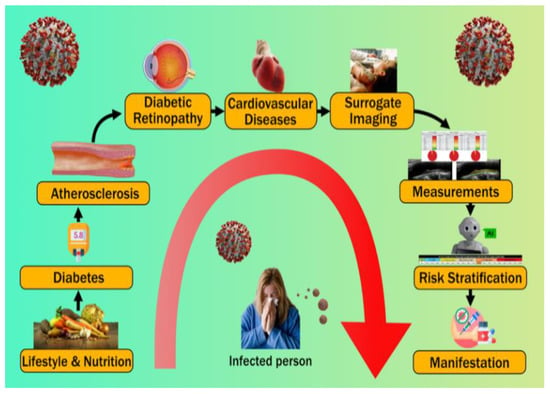Reviews on Artificial Intelligence and Natural Language Processing in Medical Diagnostics
Share This Topical Collection
Editor
Topical Collection Information
Dear Colleagues,
Artificial intelligence and natural language processing have demonstrated great potential to improve the health outcomes of patients and transform healthcare services. This Topical Collection aims to publish high-quality review articles within the field of Artificial Intelligence and Natural Language Processing in Medical Diagnostics. We warmly welcome researchers in relevant areas to contribute up-to-date, full-length, comprehensive reviews highlighting the latest developments in their research fields.
Distinguished researchers from all over the world will be invited to contribute to this Topical Collection. Potential contributors/invited authors are kindly requested to submit a tentative title and a short abstract to our Editorial Office (diagnostics@mdpi.com) for pre-evaluation. Please note that selected full papers will still be subjected to a thorough and rigorous peer review. All papers will be published on an ongoing basis. The papers will be published with full open access after peer review.
Prof. Dr. Shang-Ming Zhou
Collection Editor
Manuscript Submission Information
Manuscripts should be submitted online at www.mdpi.com by registering and logging in to this website. Once you are registered, click here to go to the submission form. Manuscripts can be submitted until the deadline. All submissions that pass pre-check are peer-reviewed. Accepted papers will be published continuously in the journal (as soon as accepted) and will be listed together on the collection website. Research articles, review articles as well as short communications are invited. For planned papers, a title and short abstract (about 100 words) can be sent to the Editorial Office for announcement on this website.
Submitted manuscripts should not have been published previously, nor be under consideration for publication elsewhere (except conference proceedings papers). All manuscripts are thoroughly refereed through a single-blind peer-review process. A guide for authors and other relevant information for submission of manuscripts is available on the Instructions for Authors page. Diagnostics is an international peer-reviewed open access semimonthly journal published by MDPI.
Please visit the Instructions for Authors page before submitting a manuscript.
The Article Processing Charge (APC) for publication in this open access journal is 2600 CHF (Swiss Francs).
Submitted papers should be well formatted and use good English. Authors may use MDPI's
English editing service prior to publication or during author revisions.
Keywords
- reviews
- artificial intelligence
- natural language processing
- medical diagnostics
Published Papers (5 papers)
Open AccessReview
Machine Learning in Colorectal Cancer Risk Prediction from Routinely Collected Data: A Review
by
Bruce Burnett, Shang-Ming Zhou, Sinead Brophy, Phil Davies, Paul Ellis, Jonathan Kennedy, Amrita Bandyopadhyay, Michael Parker and Ronan A. Lyons
Cited by 3 | Viewed by 2387
Abstract
The inclusion of machine-learning-derived models in systematic reviews of risk prediction models for colorectal cancer is rare. Whilst such reviews have highlighted methodological issues and limited performance of the models included, it is unclear why machine-learning-derived models are absent and whether such models
[...] Read more.
The inclusion of machine-learning-derived models in systematic reviews of risk prediction models for colorectal cancer is rare. Whilst such reviews have highlighted methodological issues and limited performance of the models included, it is unclear why machine-learning-derived models are absent and whether such models suffer similar methodological problems. This scoping review aims to identify machine-learning models, assess their methodology, and compare their performance with that found in previous reviews. A literature search of four databases was performed for colorectal cancer prediction and prognosis model publications that included at least one machine-learning model. A total of 14 publications were identified for inclusion in the scoping review. Data was extracted using an adapted CHARM checklist against which the models were benchmarked. The review found similar methodological problems with machine-learning models to that observed in systematic reviews for non-machine-learning models, although model performance was better. The inclusion of machine-learning models in systematic reviews is required, as they offer improved performance despite similar methodological omissions; however, to achieve this the methodological issues that affect many prediction models need to be addressed.
Full article
►▼
Show Figures
Open AccessReview
Natural Language Processing Applications for Computer-Aided Diagnosis in Oncology
by
Chengtai Li, Yiming Zhang, Ying Weng, Boding Wang and Zhenzhu Li
Cited by 18 | Viewed by 5173
Abstract
In the era of big data, text-based medical data, such as electronic health records (EHR) and electronic medical records (EMR), are growing rapidly. EHR and EMR are collected from patients to record their basic information, lab tests, vital signs, clinical notes, and reports.
[...] Read more.
In the era of big data, text-based medical data, such as electronic health records (EHR) and electronic medical records (EMR), are growing rapidly. EHR and EMR are collected from patients to record their basic information, lab tests, vital signs, clinical notes, and reports. EHR and EMR contain the helpful information to assist oncologists in computer-aided diagnosis and decision making. However, it is time consuming for doctors to extract the valuable information they need and analyze the information from the EHR and EMR data. Recently, more and more research works have applied natural language processing (NLP) techniques, i.e., rule-based, machine learning-based, and deep learning-based techniques, on the EHR and EMR data for computer-aided diagnosis in oncology. The objective of this review is to narratively review the recent progress in the area of NLP applications for computer-aided diagnosis in oncology. Moreover, we intend to reduce the research gap between artificial intelligence (AI) experts and clinical specialists to design better NLP applications. We originally identified 295 articles from the three electronic databases: PubMed, Google Scholar, and ACL Anthology; then, we removed the duplicated papers and manually screened the irrelevant papers based on the content of the abstract; finally, we included a total of 23 articles after the screening process of the literature review. Furthermore, we provided an in-depth analysis and categorized these studies into seven cancer types: breast cancer, lung cancer, liver cancer, prostate cancer, pancreatic cancer, colorectal cancer, and brain tumors. Additionally, we identified the current limitations of NLP applications on supporting the clinical practices and we suggest some promising future research directions in this paper.
Full article
►▼
Show Figures
Open AccessReview
The Need for Artificial Intelligence Based Risk Factor Analysis for Age-Related Macular Degeneration: A Review
by
Abhishek Vyas, Sundaresan Raman, Janani Surya, Sagnik Sen and Rajiv Raman
Cited by 5 | Viewed by 2493
Abstract
In epidemiology, a risk factor is a variable associated with increased disease risk. Understanding the role of risk factors is significant for developing a strategy to improve global health. There is strong evidence that risk factors like smoking, alcohol consumption, previous cataract surgery,
[...] Read more.
In epidemiology, a risk factor is a variable associated with increased disease risk. Understanding the role of risk factors is significant for developing a strategy to improve global health. There is strong evidence that risk factors like smoking, alcohol consumption, previous cataract surgery, age, high-density lipoprotein (HDL) cholesterol, BMI, female gender, and focal hyper-pigmentation are independently associated with age-related macular degeneration (AMD). Currently, in the literature, statistical techniques like logistic regression, multivariable logistic regression, etc., are being used to identify AMD risk factors by employing numerical/categorical data. However, artificial intelligence (AI) techniques have not been used so far in the literature for identifying risk factors for AMD. On the other hand, artificial intelligence (AI) based tools can anticipate when a person is at risk of developing chronic diseases like cancer, dementia, asthma, etc., in providing personalized care. AI-based techniques can employ numerical/categorical and/or image data thus resulting in multimodal data analysis, which provides the need for AI-based tools to be used for risk factor analysis in ophthalmology. This review summarizes the statistical techniques used to identify various risk factors and the higher benefits that AI techniques provide for AMD-related disease prediction. Additional studies are required to review different techniques for risk factor identification for other ophthalmic diseases like glaucoma, diabetic macular edema, retinopathy of prematurity, cataract, and diabetic retinopathy.
Full article
►▼
Show Figures
Open AccessSystematic Review
Automated Identification of Multiple Findings on Brain MRI for Improving Scan Acquisition and Interpretation Workflows: A Systematic Review
by
Kaining Sheng, Cecilie Mørck Offersen, Jon Middleton, Jonathan Frederik Carlsen, Thomas Clement Truelsen, Akshay Pai, Jacob Johansen and Michael Bachmann Nielsen
Viewed by 1956
Abstract
We conducted a systematic review of the current status of machine learning (ML) algorithms’ ability to identify multiple brain diseases, and we evaluated their applicability for improving existing scan acquisition and interpretation workflows. PubMed Medline, Ovid Embase, Scopus, Web of Science, and IEEE
[...] Read more.
We conducted a systematic review of the current status of machine learning (ML) algorithms’ ability to identify multiple brain diseases, and we evaluated their applicability for improving existing scan acquisition and interpretation workflows. PubMed Medline, Ovid Embase, Scopus, Web of Science, and IEEE Xplore literature databases were searched for relevant studies published between January 2017 and February 2022. The quality of the included studies was assessed using the Quality Assessment of Diagnostic Accuracy Studies 2 tool. The applicability of ML algorithms for successful workflow improvement was qualitatively assessed based on the satisfaction of three clinical requirements. A total of 19 studies were included for qualitative synthesis. The included studies performed classification tasks (n = 12) and segmentation tasks (n = 7). For classification algorithms, the area under the receiver operating characteristic curve (AUC) ranged from 0.765 to 0.997, while accuracy, sensitivity, and specificity ranged from 80% to 100%, 72% to 100%, and 65% to 100%, respectively. For segmentation algorithms, the Dice coefficient ranged from 0.300 to 0.912. No studies satisfied all clinical requirements for successful workflow improvements due to key limitations pertaining to the study’s design, study data, reference standards, and performance reporting. Standardized reporting guidelines tailored for ML in radiology, prospective study designs, and multi-site testing could help alleviate this.
Full article
►▼
Show Figures
Open AccessReview
Cardiovascular Risk Stratification in Diabetic Retinopathy via Atherosclerotic Pathway in COVID-19/Non-COVID-19 Frameworks Using Artificial Intelligence Paradigm: A Narrative Review
by
Smiksha Munjral, Mahesh Maindarkar, Puneet Ahluwalia, Anudeep Puvvula, Ankush Jamthikar, Tanay Jujaray, Neha Suri, Sudip Paul, Rajesh Pathak, Luca Saba, Renoh Johnson Chalakkal, Suneet Gupta, Gavino Faa, Inder M. Singh, Paramjit S. Chadha, Monika Turk, Amer M. Johri, Narendra N. Khanna, Klaudija Viskovic, Sophie Mavrogeni, John R. Laird, Gyan Pareek, Martin Miner, David W. Sobel, Antonella Balestrieri, Petros P. Sfikakis, George Tsoulfas, Athanasios Protogerou, Durga Prasanna Misra, Vikas Agarwal, George D. Kitas, Raghu Kolluri, Jagjit Teji, Mustafa Al-Maini, Surinder K. Dhanjil, Meyypan Sockalingam, Ajit Saxena, Aditya Sharma, Vijay Rathore, Mostafa Fatemi, Azra Alizad, Vijay Viswanathan, Padukode R. Krishnan, Tomaz Omerzu, Subbaram Naidu, Andrew Nicolaides, Mostafa M. Fouda and Jasjit S. Suriadd
Show full author list
remove
Hide full author list
| Viewed by 5314
Abstract
Diabetes is one of the main causes of the rising cases of blindness in adults. This microvascular complication of diabetes is termed diabetic retinopathy (DR) and is associated with an expanding risk of cardiovascular events in diabetes patients. DR, in its various forms,
[...] Read more.
Diabetes is one of the main causes of the rising cases of blindness in adults. This microvascular complication of diabetes is termed diabetic retinopathy (DR) and is associated with an expanding risk of cardiovascular events in diabetes patients. DR, in its various forms, is seen to be a powerful indicator of atherosclerosis. Further, the macrovascular complication of diabetes leads to coronary artery disease (CAD). Thus, the timely identification of cardiovascular disease (CVD) complications in DR patients is of utmost importance. Since CAD risk assessment is expensive for low-income countries, it is important to look for surrogate biomarkers for risk stratification of CVD in DR patients. Due to the common genetic makeup between the coronary and carotid arteries, low-cost, high-resolution imaging such as carotid B-mode ultrasound (US) can be used for arterial tissue characterization and risk stratification in DR patients. The advent of artificial intelligence (AI) techniques has facilitated the handling of large cohorts in a big data framework to identify atherosclerotic plaque features in arterial ultrasound. This enables timely CVD risk assessment and risk stratification of patients with DR. Thus, this review focuses on understanding the pathophysiology of DR, retinal and CAD imaging, the role of surrogate markers for CVD, and finally, the CVD risk stratification of DR patients. The review shows a step-by-step cyclic activity of how diabetes and atherosclerotic disease cause DR, leading to the worsening of CVD. We propose a solution to how AI can help in the identification of CVD risk. Lastly, we analyze the role of DR/CVD in the COVID-19 framework.
Full article
►▼
Show Figures






